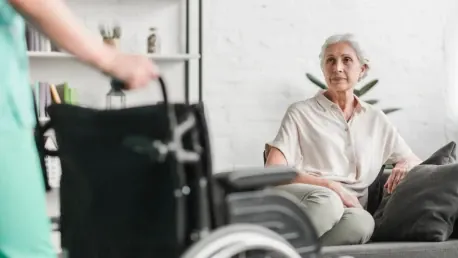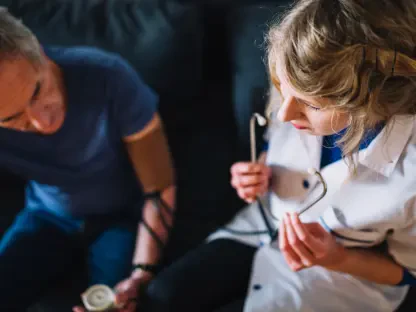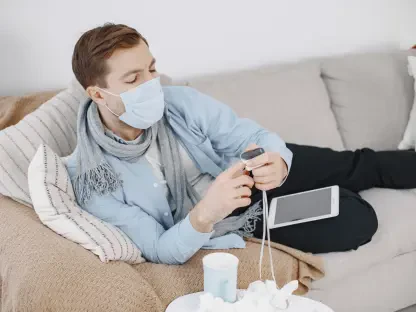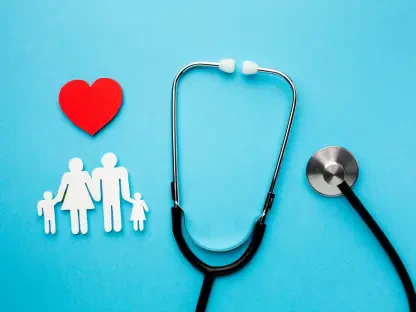Wearable technology is increasingly becoming an essential tool in enhancing the quality of life for elderly individuals. Innovations in wearables are providing new ways for seniors to manage their health, ensure their safety, stay connected, and maintain their independence. This article delves into the ways these innovative devices are transforming healthcare and daily living for seniors, emphasizing safety, health monitoring, and independence.
Enhancing Health Monitoring
Continuous Vital Sign Tracking
Wearables equipped with advanced sensors continuously monitor vital signs such as heart rate, blood pressure, glucose levels, and oxygen levels. This real-time health data is invaluable, especially for seniors who may suffer from chronic health conditions or are at a higher risk for sudden health emergencies. For example, continuous glucose monitors can alert users to fluctuations in blood sugar levels, enabling timely dietary adjustments or medication. By having constant oversight of these metrics, any irregularities can be quickly identified and addressed, potentially preventing severe health complications. This on-the-go monitoring offers an added layer of security and allows for immediate responses, which is especially beneficial when healthcare professionals are not readily available.
In addition to providing real-time feedback, wearable health monitoring devices can store historical data that is instrumental for healthcare providers during routine check-ups or emergency visits. Doctors can access this data to better understand their patient’s health patterns and make more informed decisions regarding their treatment plans. These devices are particularly beneficial in managing cardiovascular diseases where tracking heart rate and blood pressure can indicate issues that require medical intervention. The continuous nature of this monitoring allows for a proactive approach, enabling the early detection of potential problems before they escalate into more severe conditions. The convenience of having constant vigilance makes these wearables a revolutionary tool in senior healthcare management.
Disease Management
Wearable technology plays a crucial role in managing chronic diseases by providing regular updates on crucial health metrics. Wearables can help manage conditions such as hypertension and diabetes more effectively by offering continuous monitoring, thus reducing the risk of complications. For instance, blood pressure cuffs and glucose monitors connected to wearable devices can track these vital signs and store the data for future reference. The constant access to this information helps both the patient and the healthcare provider to maintain better control over these chronic conditions. The immediate feedback loop also allows for timely modifications in medication or lifestyle, ultimately leading to a healthier, more stable condition for the elderly.
The integration of wearable technology into disease management enables a more personalized treatment approach tailored to each individual’s needs. These devices can send real-time alerts to caregivers and medical professionals, allowing for swift intervention when necessary. Additionally, the data collected by wearables can be shared with healthcare providers remotely, eliminating the need for frequent in-person visits. This is particularly advantageous for seniors who may have mobility issues or live in remote locations. By providing detailed insights into health trends and conditions, wearables empower seniors to take an active role in managing their health and well-being, thereby improving their overall quality of life.
Safety and Emergency Response
Fall Detection and Emergency Alerts
Many wearables come equipped with sensors that can detect falls and automatically alert caregivers, family members, or emergency services. This feature is vital, as falls are a leading cause of injury and hospitalization among the elderly. With these sensors, a sudden drop in height combined with an unusual lack of movement can trigger an emergency alert, ensuring that help arrives promptly. This capability is especially crucial for seniors living alone, as it ensures that they are never truly alone in the event of an emergency. The technology has advanced to the point where it can differentiate between a fall and a simple stumble, reducing the likelihood of false alarms and providing accurate, life-saving alerts when needed.
Additionally, many wearable devices are integrated with location services that can pinpoint the exact location of the individual in distress. This feature is invaluable for emergency responders who need to locate the senior quickly. For those with cognitive impairments, such as dementia, this can be particularly life-saving as it ensures that help can find them swiftly even if they wander off or get lost. The ability to provide immediate assistance in the event of a fall can significantly reduce the severity of injuries and lead to faster recovery times, making wearables an indispensable tool in elderly care.
SOS Buttons
Wearable devices often include SOS buttons that seniors can use to call for help in emergencies. This immediate access to emergency services provides peace of mind to both the elderly and their families. In a critical situation, a simple press of a button can connect the user to a pre-programmed emergency contact or directly to 911. This feature ensures that seniors can get the help they need rapidly, without the need to struggle with a phone or navigate through multiple steps. The presence of an SOS button reassures seniors that help is always within reach, which can be especially comforting for those prone to anxiety or who have experienced emergencies in the past.
Furthermore, SOS buttons are often accompanied by two-way communication capabilities, enabling the user to converse with emergency operators or caregivers while awaiting help. This direct line of communication ensures that relevant information can be relayed quickly, increasing the efficiency and effectiveness of the response. In addition, many SOS-enabled wearables offer customizable settings, allowing users to define specific contacts who will be alerted in case of an emergency, thus tailoring the response to the individual’s unique support system. The combination of immediate alerts and personalized communication makes SOS buttons a critical feature in enhancing the safety and autonomy of elderly individuals.
Improving Connectivity and Communication
Advanced Smartwatches
Smartwatches with voice assistants enable seniors to make calls and send messages without needing a smartphone, thereby enhancing their connectivity and communication. These devices often feature easy-to-navigate interfaces and voice-activated commands, ensuring that even those with limited technical skills can stay connected. The ability to make calls and send messages directly from their wrist allows seniors to maintain their social interactions and keeps them in close contact with family members and friends. Such connectivity is crucial for overall mental well-being, as it helps seniors feel less isolated and more engaged with their social circle. Additionally, voice assistants can provide reminders for daily tasks, further assisting in the management of everyday life.
Smartwatches also come with additional features such as calendar alerts and medication reminders, ensuring that important appointments and medication schedules are never missed. For seniors with cognitive impairments, this can be incredibly beneficial, as the smartwatch can act as an extension of their memory. Some models even offer integrated health monitoring, including heart rate and activity tracking, providing a comprehensive tool that combines communication, health management, and daily assistance in one device. With these advanced capabilities, smartwatches are not just communication tools but integral parts of a holistic approach to elderly care, promoting independence and well-being.
GPS Tracking
GPS-enabled wearables assist caregivers in locating seniors, especially those with cognitive impairments like dementia. This feature ensures that elderly individuals can be quickly found if they wander off or get lost, providing an essential layer of safety. Caregivers can receive real-time updates on the senior’s location and set up geofencing alerts that notify them if the individual leaves a predefined safe zone. This helps in providing immediate assistance and locating the senior before they get too far, which is crucial for preventing potentially dangerous situations. The peace of mind that comes with knowing the exact whereabouts of a loved one cannot be overstated, especially for families with elderly members who are prone to wandering.
In addition to real-time tracking, GPS wearables often come with features like route history, enabling caregivers to review the paths taken by the elderly individual over a specified period. This can be useful in identifying any frequent wandering patterns or areas where the senior may be getting confused or lost. Some devices also offer emergency call functionalities that allow the wearer to reach out for help if needed. By integrating robust location services with other safety features, GPS-enabled wearables are effectively revolutionizing how caregivers can monitor and ensure the safety of elderly individuals, providing both security and independence.
Promoting Physical Activity and Medication Adherence
Fitness Trackers
Fitness trackers encourage elderly individuals to stay active by monitoring physical activity levels, sleep patterns, and steps. These devices often include gamification features and reminders to motivate consistent exercise. By setting achievable goals and providing real-time feedback, fitness trackers can inspire seniors to incorporate more physical activity into their daily routines. Regular exercise is essential for maintaining mobility, strength, and overall health, especially as one ages. Fitness trackers can track a variety of activities, from walking and running to swimming and cycling, offering a comprehensive overview of the user’s physical activity and highlighting areas for improvement.
Beyond tracking activity, fitness trackers can monitor other health metrics such as heart rate, sleep quality, and calorie intake, offering a holistic approach to health and wellness. By analyzing these metrics, users can identify patterns and make informed decisions about their lifestyle and habits. Sleep tracking, for instance, can reveal disruptions or poor sleep quality, prompting investigations into underlying causes or adjustments in sleep hygiene practices. The reminders feature can nudge seniors to move regularly, preventing prolonged periods of inactivity that can lead to health issues like blood clots or decreased metabolism. In essence, fitness trackers empower seniors to take control of their physical health, encouraging a more active and balanced lifestyle.
Medication Reminders
Wearable devices can be programmed to send medication reminders, ensuring that seniors take their medications on time. This feature is particularly beneficial for those with multiple prescriptions, as it helps manage complex medication schedules. Timely medication adherence is crucial for the effectiveness of treatment plans and the prevention of potential health complications. Wearables can provide discrete and timely alerts, reducing the risk of forgetfulness, which is common among the elderly. Additionally, some advanced devices also allow users or caregivers to log when a medication was taken, creating a documented compliance history that can be shared with healthcare providers.
Moreover, medication reminders can be customized based on the specific needs and schedules of the individual. This flexibility ensures that the reminders do not become a generic notification that might be ignored, but rather a crucial part of daily routine management. For seniors experiencing cognitive decline or memory issues, these reminders can significantly boost their independence by reducing the reliance on caregivers for medication management. Some devices even offer the ability to set up emergency alerts if a dose is missed, prompting immediate attention from caregivers. By incorporating medication management into their functionalities, wearables help ensure that seniors adhere to their prescribed treatments effectively and maintain their health.
Choosing the Right Wearable Device
Ease of Use and Comfort
When selecting a wearable device for seniors, it is essential to consider ease of use, including simple interfaces, large buttons, and voice assistance. Devices designed with simplicity in mind are more likely to be embraced by elderly users who may not be tech-savvy. User-friendly interfaces and large, easily accessible buttons can facilitate navigation and operation, ensuring that seniors can make the most of their wearables without frustration. Voice-assisted features also add a layer of convenience, allowing users to interact with the device through simple voice commands, which can be particularly beneficial for those with limited dexterity or visual impairments.
Comfort is equally crucial, as seniors will need to wear these devices for extended periods. Lightweight, ergonomically designed wearables ensure that they do not become cumbersome or irritating over time. The material and design should prevent skin irritation or discomfort, and adjustable straps or bands can offer a customized fit. Wearables that strike the right balance between functionality and comfort are more likely to be worn consistently, thereby maximizing their benefits. Involving the elderly individuals in the selection process can help identify which features they find most useful and comfortable, ensuring higher user satisfaction and compliance.
Battery Life and Cost
Wearable technology is becoming critical in enhancing the quality of life for seniors. Innovations in wearables offer new ways for older adults to manage their health, ensure their safety, stay connected with loved ones, and maintain their autonomy. This article explores the transformative impact of these advanced devices on senior healthcare and daily living, with a strong focus on safety, health monitoring, and independence. By allowing for real-time health tracking, fall detection, and emergency alerts, wearable technology can significantly reduce the risks associated with aging. These devices also enable seniors to communicate more easily with family members and healthcare providers, providing peace of mind to both users and their loved ones. As technology continues to evolve, wearables are becoming more user-friendly, thus encouraging more elderly individuals to embrace these innovations. Overall, the integration of wearable technology offers the promise of a better, safer, and more connected life for seniors, enhancing their well-being and independence in their golden years.









